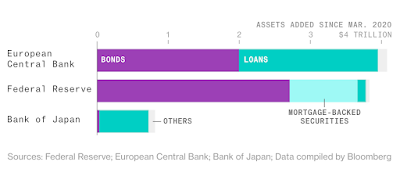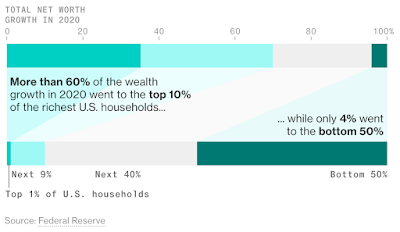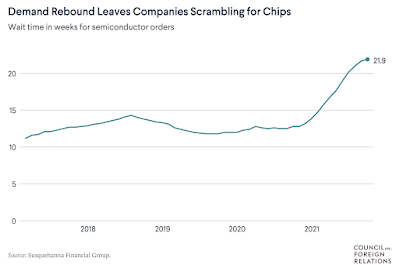1. Performance of various financial asset categories over the year - bitcoin tops.
2. US equity markets topped among the major economies.
3. Corporates globally raised over $12.1 trillion in 2021 through loans and capital markets.
For the first time ever, more money was raised by special purchase acquisition companies in the US than through traditional IPOs. Issuance has slowed down since a bumper first quarter, but a steady stream of blank-cheque companies — which raise money from investors then seek a company to acquire — have come to market through the final months of the year, collectively raising more than $152bn this year.
Reflecting the froth in financial markets, global M&A for 2021 soared to their highest ever levels at $5.8 trillion, a 64% rise from last year.
The most egregious manifestation of the times has been the rise of SPACs from being a derisive curiosity to an important contributor to the financial market.A total of 334 Spac deals — where a company is created to list and merge with a privately held business and bring it to the stock market — were announced, for companies valued at a combined $597bn, or 10 per cent of global deals by value.
4. Indian markets benefited from the liquidity glut and search for yields. Another positive factor was the re-direction of capital away from China. It was a record breaking year for IPOs in Indian markets
Sixty-three companies raised Rs 1.19 trillion through initial public offerings (IPOs) in calendar year 2021 — a record for any year. This is nearly 4.5x the Rs 26,613 crore raised through 15 IPOs in 2020 and almost double the previous best of Rs 68,827 crore raised in 2017, according to PRIME Database. Overall, public equity fundraising — that includes qualified institutional placements, follow-on offerings, as well as infrastructure investment trusts/real estate investment trusts — stood at Rs 2.02 trillion — higher than the previous high of Rs 1.76 trillion in the preceding year... The average deal size for IPOs was Rs 1,884 crore... Of the 59 IPOs for which the data is available, 36 IPOs received mega responses of more than 10x (of which, six IPOs more than 100x), while eight IPOs were oversubscribed more than 3x. The balance 15 IPOs were oversubscribed between 1x and 3x.
The biggest jump was in IPOs, where it topped the previous best by nearly 100%. Of the IPOs, 38.7% by deal value was cornered by digital companies.
Retail interest as manifest in inflows into mutual funds too was at a record high.
Arguably the financial market trend of the year in India was the emergence of an extraordinary 39 unicorns.
The country overtook China to become the second most happening VC market after the US.5. The driving force behind the liquidity glut has been the extraordinary decade and more long monetary accommodation by central banks in developed countries, which got amplified during the pandemic. Reflecting this, the market capitalisation of the biggest global companies is dwarfed by the combined balance sheets of the major central banks. Since the start of the pandemic, the balance sheet of US Fed, ECB, and BoJ has swollen by $9 trillion to $24 trillion.
However, it can be now safely stated that the era of quantitative easing may have ended and the era of "quantitive tightening" has begun.
6. Good set of graphics from McKinsey here. This captures the remarkable pace of pandemic vaccine development times in perspective
7. Income loss due to the pandemic was steepest for the poorest.
With almost $8.6 billion in gifts announced in just 12 months, Scott has vaulted to the tippy top of philanthropic giving, outspending the behemoth Gates and Ford Foundations’ annual grants — combined... For nearly 90% of organizations that responded to a Bloomberg survey, Scott’s gift was the largest they’ve ever received, with donations ranging from $750,000 to $60 million.


















No comments:
Post a Comment